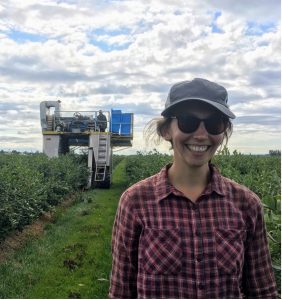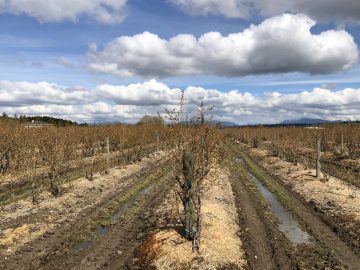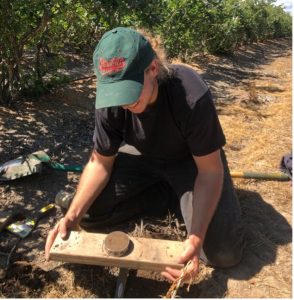Project lead: Paula Resque Porto

Project personnel: Katarina Neufeld, Carson Li, Kate Hengel, Conley Keyes
Supervisor: Sean Smukler
Project funding:
This project is part of a 5-year study titled Quantification and Mitigation of GHG Emissions from High-Value Agricultural Production Systems in British Columbia, funded by the Agricultural Greenhouse Gas Program (AGGP).
Overview:
As Canada strives to reduce its national emissions, every sector needs to do its part. Agricultural soils can be a source or a sink of greenhouse gases (GHGs) depending on how they are being managed. Understanding which management practices mitigate emissions is pivotal for reducing sectoral emissions. Delta is one of British Columbia’s main farming regions despite having poorly drained soils, high water tables, and receiving an average of 1153 mm of rain per year. Most producers in the region acknowledge that drainage is a concern and use strategies of varying permanence to improve the natural hydrology of their soils.
Knowing that soil water is one of the main mediators of soil GHG emissions, the aim of this project is to identify how soil drainage impacts soil GHG emissions in the context of an important provincial crop: highbush blueberries.
Research objectives:
The overarching goal of this project is to provide guidance on how to reduce GHG emissions from highbush blueberry production, and specifically to:
- Quantify the impact of soil drainage on soil GHG emissions
- Identify beneficial drainage management practices for GHG mitigation
- Evaluate the DenitrificationDecomposition (DNDC) model as a tool for simulating GHG emissions from different drainage management types
Research sites and design:
This 2-year observational study took place on 9 highbush blueberry farms in Delta, British Columbia. Drainage management at each farm ranged from impermanent (surface drainage ditches and subsoiling) to permanent (subsurface drainage tiles with or without ditch pumps).
Measurements and data collection:

Greenhouse gas fluxes were measured every two weeks from June 2017 to June 2019 using non-steady state manual chambers and a portable FTIR analyzer (Gasmet DX4040).
Environmental variables (such as soil temperature and water content) were measured at each GHG sampling event. At the end of the study, soil samples were taken from each field to measure total soil carbon and nitrogen, bulk density, and other important variables.
Results and reports:
Results are expected in late 2021 and will include:
- A quantification of the impact of soil drainage on the timing and magnitude of soil emissions
- An assessment of which measured variables impact soil emissions the most
- An evaluation of how well the DNDC.vCAN model simulates emissions from the studied agroecosystem
A video presentation of preliminary findings presented at the Canadian Society of Soil Science Conference in June 2021 can be viewed here.


